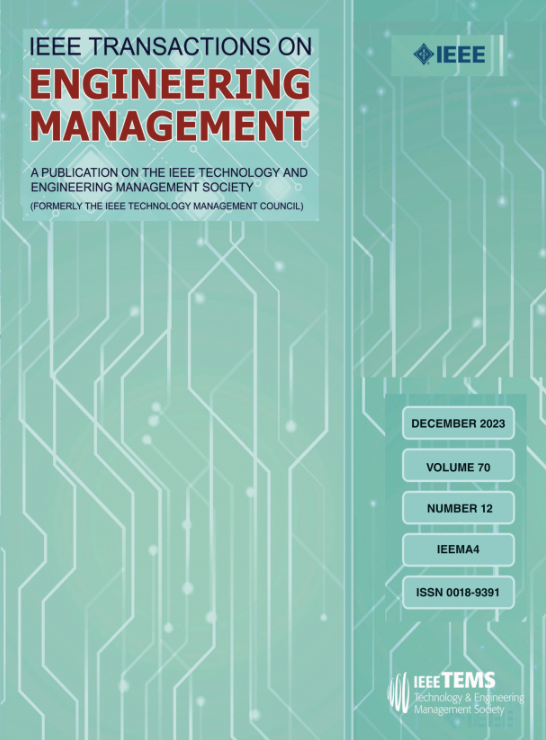A Multilevel Examination of Performance in Innovation Ecosystems: Board, Asset Scale, Technology, and Government Support
IF 4.6
3区 管理学
Q1 BUSINESS
引用次数: 0
Abstract
We investigate how the firm's board structure (i.e., Chief Executive Officer duality or independence) and its asset scale at the microlevel, the industry's technological intensity at the mesolevel, and the government's initiatives at the macrolevel influence firms’ digital innovation performance in the innovation ecosystem of the Chinese manufacturing industry. Drawing on a longitudinal study of 1098 firms sourced from the China Stock Market and Accounting Research database, in this article, we utilize a coevolutionary multilevel model for the exploration. Our findings reveal that firms led by independent board members with large-scale assets and that have received government subsidies are more likely to achieve superior digital innovation performance. Furthermore, the impact of microlevel factors varies with technological intensity, with medium- and high-tech firms showing more significant innovation performance improvements. We suggest that firms maintain a board composition with a balanced mix of independents with objective oversight and nonindependents with strategic influence and allocate their resources to capitalize on emerging technological trends to perform better in innovation ecosystems. Firms should not solely depend on government support but align their resource basis and governance structures to leverage technology and incentives effectively. Policymakers should craft targeted initiatives depending on the innovation ecosystems’ technological intensity and the firms’ resource endowments.创新生态系统绩效的多层次考察:董事会、资产规模、技术和政府支持
在中国制造业创新生态系统中,研究了企业董事会结构(即首席执行官二元性或独立性)及其资产规模在微观层面、行业技术强度在中观层面和政府举措在宏观层面对企业数字创新绩效的影响。本文通过对中国股票市场和会计研究数据库中1098家公司的纵向研究,采用协同进化的多层次模型进行探索。我们的研究结果表明,由拥有大规模资产的独立董事会成员领导并获得政府补贴的公司更有可能取得卓越的数字创新绩效。微观层面因素的影响随技术强度的变化而变化,中、高技术企业的创新绩效提升更为显著。我们建议公司在董事会中保持独立董事与具有客观监督的独立董事和具有战略影响力的非独立董事的平衡组合,并配置其资源以利用新兴技术趋势,从而在创新生态系统中表现更好。企业不应仅仅依赖政府支持,而应调整其资源基础和治理结构,以有效利用技术和激励措施。政策制定者应该根据创新生态系统的技术强度和企业的资源禀赋来制定有针对性的举措。
本文章由计算机程序翻译,如有差异,请以英文原文为准。
求助全文
约1分钟内获得全文
求助全文
来源期刊

IEEE Transactions on Engineering Management
管理科学-工程:工业
CiteScore
10.30
自引率
19.00%
发文量
604
审稿时长
5.3 months
期刊介绍:
Management of technical functions such as research, development, and engineering in industry, government, university, and other settings. Emphasis is on studies carried on within an organization to help in decision making or policy formation for RD&E.
 求助内容:
求助内容: 应助结果提醒方式:
应助结果提醒方式:


